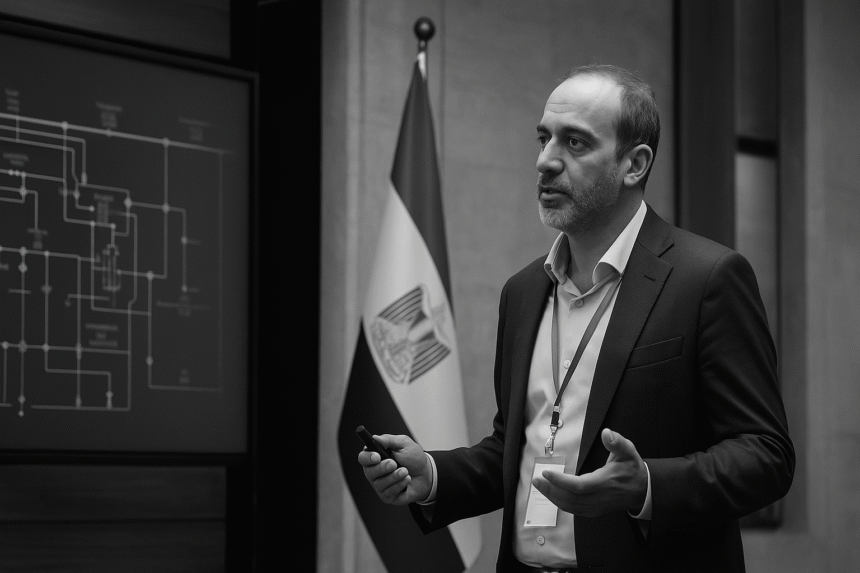Headline:
Before the Surge: Why Grid Visibility Is the New EV Priority
Subheadline:
At the Riyadh River Rehabilitation Conference, CATEC’s CEO explained why grid reliability and smart infrastructure must come before mass electric vehicle adoption.
Introduction
“Power infrastructure must be ready before we ask for performance on the ground.”
That powerful declaration by Rami Abu Hayah, CEO of CATEC, came during a pivotal panel at the Riyadh River Rehabilitation Conference—and it’s already reshaping how regional stakeholders think about EV expansion.
In his LinkedIn reflection, Rami brought the EV conversation back to its roots—literally—reminding his peers that smart charging networks depend not on how many ports are installed, but on how well the grid can support them. His words were less about future tech and more about present readiness.
Background & Context
Rami Abu Hayah leads CATEC, a key player in the smart infrastructure space across MENA. CATEC is best known for launching SHABK, a cloud-based EV Charging Management Platform for Charge Point Operators (CPOs), energy companies, and property owners looking to future-proof their infrastructure.
The Riyadh River Rehabilitation Conference—typically known for its environmental and ecological emphasis—has increasingly attracted infrastructure experts focused on clean energy and smart mobility. It was in this multidisciplinary setting that Rami sounded the alarm: don’t confuse expansion with preparedness.
His post arrives at a moment when Egypt, Saudi Arabia, and neighboring markets are accelerating EV policy, but many remain focused on equipment installation without data integration or network coordination.
Main Takeaways / Observations
1. Charging Systems Are Only as Strong as the Grid Behind Them
EV adoption shouldn’t begin with vehicles or even chargers—it should begin with energy supply and load analysis. Rami stressed that if grid visibility and stability aren’t addressed, rollout efforts risk creating more problems than they solve.
2. We Need Interoperability Before Interconnection
The call to action? Bring ministries, regulators, CPOs, and utilities to the same table before hardware hits the street. “We need planning partnerships, not just procurement,” Rami emphasized, advocating for shared data platforms and live metrics across jurisdictions.
3. Egypt Must Deploy Based on Use Case, Not Just Urban Density
Rather than blanketing cities with chargers, Rami called for data-driven placement strategies based on traffic flow, demand forecasting, and local grid health. His mention of SHABK reinforced the need for platforms that support analytics-based deployment.
4. Sustainability Is More Than an Output Metric—It’s a Design Principle
The bigger message: clean energy must underpin EV infrastructure. Rami’s remarks reframed the idea of EVs as part of the broader decarbonization puzzle—not just a transport trend, but a system-wide strategy for grid modernization and emissions reduction.
Community Reaction
The post drew applause from within the industry. Stakeholders in EV mobility, clean power, and transport tech echoed Rami’s emphasis on infrastructure intelligence. One user commented: “Key takeaways for Egypt’s roadmap.” Another chimed in: “Collaboration between urban planners and utilities is no longer optional.”
In a space dominated by hardware races and national targets, the focus on grid fundamentals struck a chord with leaders looking for long-term resilience—not just optics.
Our Perspective / Analysis
As legal advisors in public-private infrastructure projects, we see Rami’s points echoed in contracts every day. Here’s what’s often missing:
-
Clauses requiring real-time data access from the utility side
-
Interoperability standards (OCPP/OICP) in early-stage tenders
-
Provisions for performance-based fault management across stakeholders
It’s no longer enough to build a charging network. It has to be built smart, with enforceable partnerships and shared accountability. Legal architecture must evolve to keep up with the physical infrastructure.
Call to Reflection or Action
Rami’s message is clear: Before we install EV chargers across our cities, we must install a culture of collaboration—anchored by energy data, grid insight, and long-view strategy.
So if you’re part of an EV strategy team, ask yourself:
Are you deploying based on visibility—or just ambition?
Source: Click Here



Leave a Reply